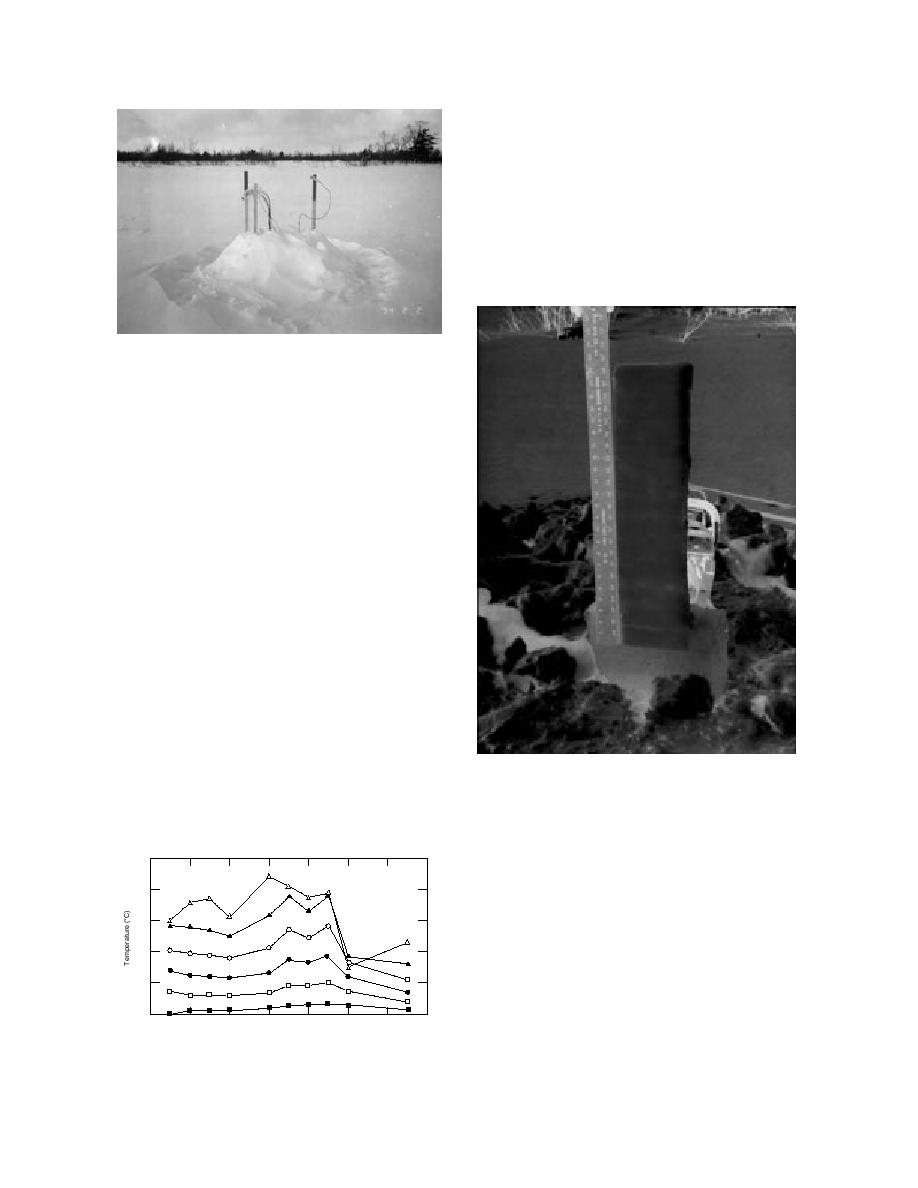
series of bricks using final pressures ranging from 3.92
to 6.87 MPa, and held the target pressure 0, 30, or 60
seconds. The load cell was placed between the
hydraulic head and the sample to measure the load as
it was applied, and to maintain the target pressure. The
results of this trial series are shown in Figure 9. There
is a clear trend toward greater density with greater
pressure and greater time held. The density region
above 820 kg/m3, at which compacted snow is said to
become ice, is shaded in Figure 9.
Figure 10. Snow mound enclosing the stack of 12
sample bricks used to study the effect of a thermal
gradient on CFG ice. The cluster of wires on the
left lead to the 12 thermocouples embedded in the
stack. The single lead on the right leads to a ther-
mistor probe installed about 10 cm from the stack.
Plastic bags cover the connectors for all of these
leads.
of tests in which Lavrov used both beams and plates
show very good agreement between the adjusted plate
data and the beam data.
The data we obtained using S2 ice collected from
Lake Superior show good agreement with other
determinations of this ice type, as did the snow ice (T1)
results. The flexural strength measured for CFG ice
was considerably greater than that for both the natural
ice measured in this study as well as for all the other
ice types except the series mentioned by Gold (1977).
Since no details are available regarding the ice type or
test temperature, we have no explanation for his obser-
vations.
Effect of final compaction pressures
Figure 12. Cut face of the stack of sample bricks at
and duration of final load
the end of the test. The bottommost brick is em-
To establish whether a compaction pressure as
bedded in snow ice because of flooding of the ice
great as 6.87 MPa was necessary to produce CFG ice,
early in the test period. The measuring stick is
and how long the pressure should be held, we made a
marked in inches.
25
Effect of thermal gradient
50 cm
20
Many potentially valuable applications for these
building blocks involve using the material in a thermal
40
15
gradient. Pavements over wet areas and walls of
30
equipment shelters are two examples. Since compacted
10
20
snow used in such conditions would quickly lose its
10
strength and integrity through recrystallization, we
5
Ice Surface
tested the response of CFG ice to these conditions.
0
Twelve bricks were placed in a stack on the ice cover
1 Feb '94
3
5
7
9
11
13
15
of a pond. The snow cover was cleared off so that the
Figure 11. Temperature profile showing the tem-
bottommost brick was in contact with the ice. A
perature variation over two weeks at six levels
thermocouple was placed beneath the center of the
in the stack of sample bricks.
9





 Previous Page
Previous Page
